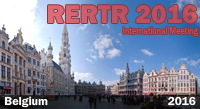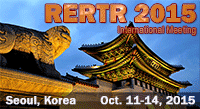Foreign Research Reactor Spent Nuclear Fuel
PROVISIONAL REACTOR SITE ASSESSMENT CHECKLIST
This checklist has been prepared for use by an assessment team to plan implementation of the United States Department of Energy's Record of Decision, dated 13 May 1996, stating that the United States will accept spent nuclear fuel containing uranium of United States origin from foreign research reactors.
The assessment team will state the purpose of the visit and provide a summary of the Final Environmental Impact Statement (DOE/EIS-0218F, February 1996) and Record of Decision to the reactor organization. The team will then address the following topics in order to obtain information that could be useful in scheduling, making preparations for, and shipping spent nuclear fuel from this reactor facility.
1. Identify key personnel to provide contact points during preparation and shipment such as:
- Reactor Personnel
- Institute Personnel, if applicable
- Local Licensing and/or other Authorities
2. Describe the status of any licensing or institutional approvals within the country or region necessary to ship the spent reactor fuel.
3. Establish a contact at the U.S. Embassy in the country in which the reactor is located.
4. Provide a short description of the reactor, its utilization, its operating schedule, and the amount of spent fuel that it generates per year.
5. Identify the current fuel inventory quantities by fuel type including:
- number of assemblies
- enrichment
- cladding material
6. If the reactor currently uses HEU fuel, identify the plans and status of replacing the existing reactor core with an LEU fueled core. For those reactors unable to convert to LEU fuel, provide the underpinning technical justification.
7. Identify any fuel corrosion concerns or other potential or ongoing releases of fission products from the stored fuel. Estimate the quantify of fuel requiring stabilization before shipment. Describe the water quality, provide available records on water quality controls, and any other related information.
8. Identify the preferred and latest possible schedules for the shipment of spent fuel. Describe the key factors underpinning these analyses. Include in the description:
a. Detailed description of the spent fuel requiring near-term shipment. This description should include: manufacturer, manufacturing specifications and drawings, serial number, fuel type, fuel irradiation history, discharge date, mass of element, initial and final isotopics, clad descriptions, radiation dose rates, heat loads, and any other features relevant to preparation for shipment.
b. Describe the consequences if the spent fuel is not shipped from the reactor site on schedule.
9. Describe the facilities that could be used to prepare and ship the spent fuel including:
a. Physical descriptions and locations of storage facilities. Also, provide the
maximum storage capacity and the length of time when the storage facility
may run out of storage space.
b. Capacities of cranes and other lifting devices
c. Floor loading limits for the building and/or storage pools.
d. Dimension of building access doors. Also, provide the restrictions,
interferences, and limitations along the path where the cask is to be moved.
e. Availability of transfer casks or other fuel handling devices
f. Capability for removal of end-boxes and/or end-fittings from fuel assemblies.
Pictures or drawings should be provided where possible. A videotape showing the facilities would also be very helpful. List any shipping casks that have been used in the past for shipping spent fuel from this facility. Describe likely transportation routes and methods.
10. Provide the reactor operator with a description of the "IAEA Guidelines" document being prepared by the IAEA to help reactor operators define the physical preparations, paperwork, and notifications that need to be completed in order to ship spent fuel. An IAEA Training Course on this subject is scheduled to be held at the Argonne National Laboratory on 13-24 January 1997.
11. Identify an potential problem areas. Estimate the amount and type of assistance that the reactor organization may need to prepare its spent fuel for shipment. Provide any other information that might be useful in scheduling, making preparations for, or shipping spent nuclear fuel from this reactor facility.
12. Describe the plans of the reactor for final disposition of spent fuel that would be generated after the 10-year DOE acceptance policy expires.




